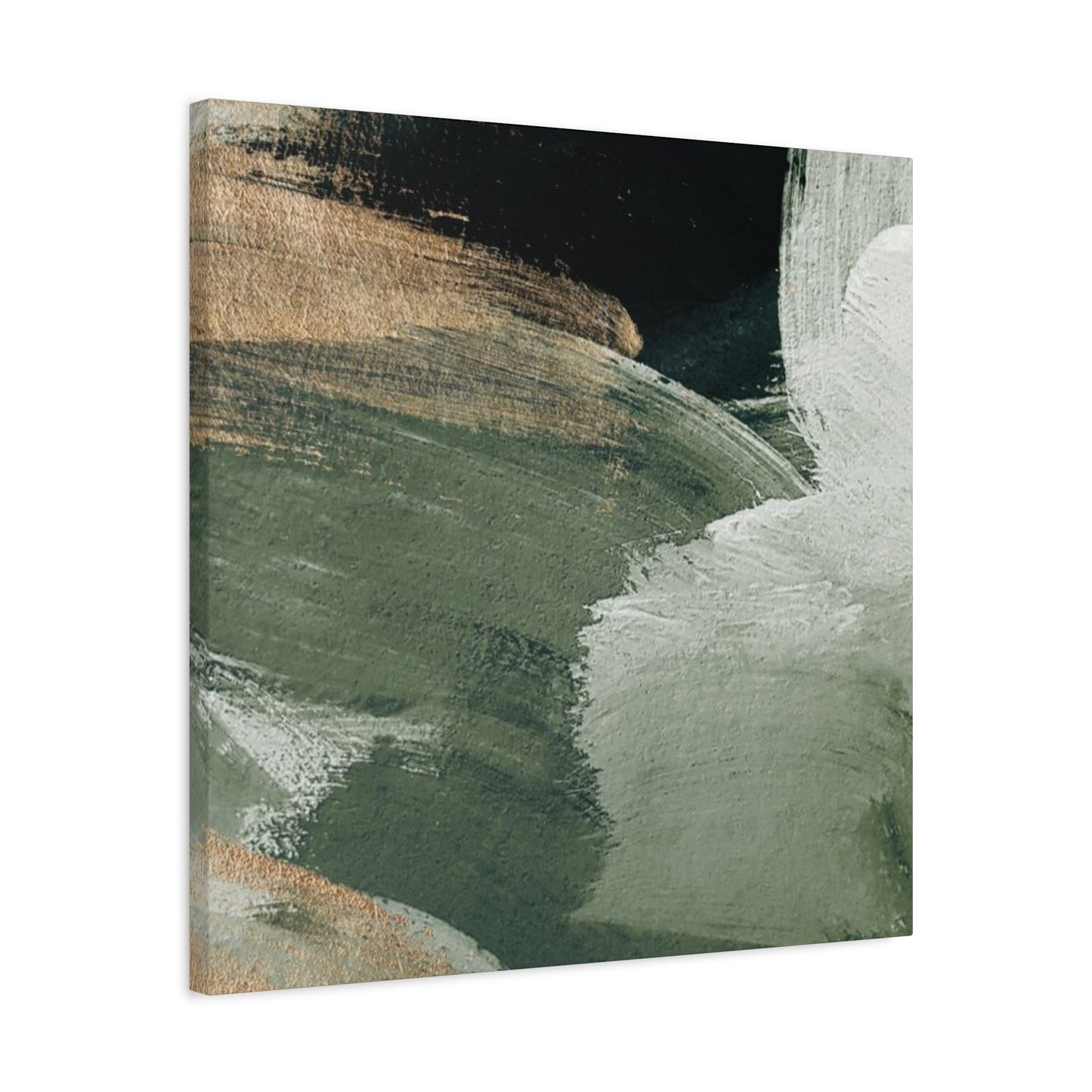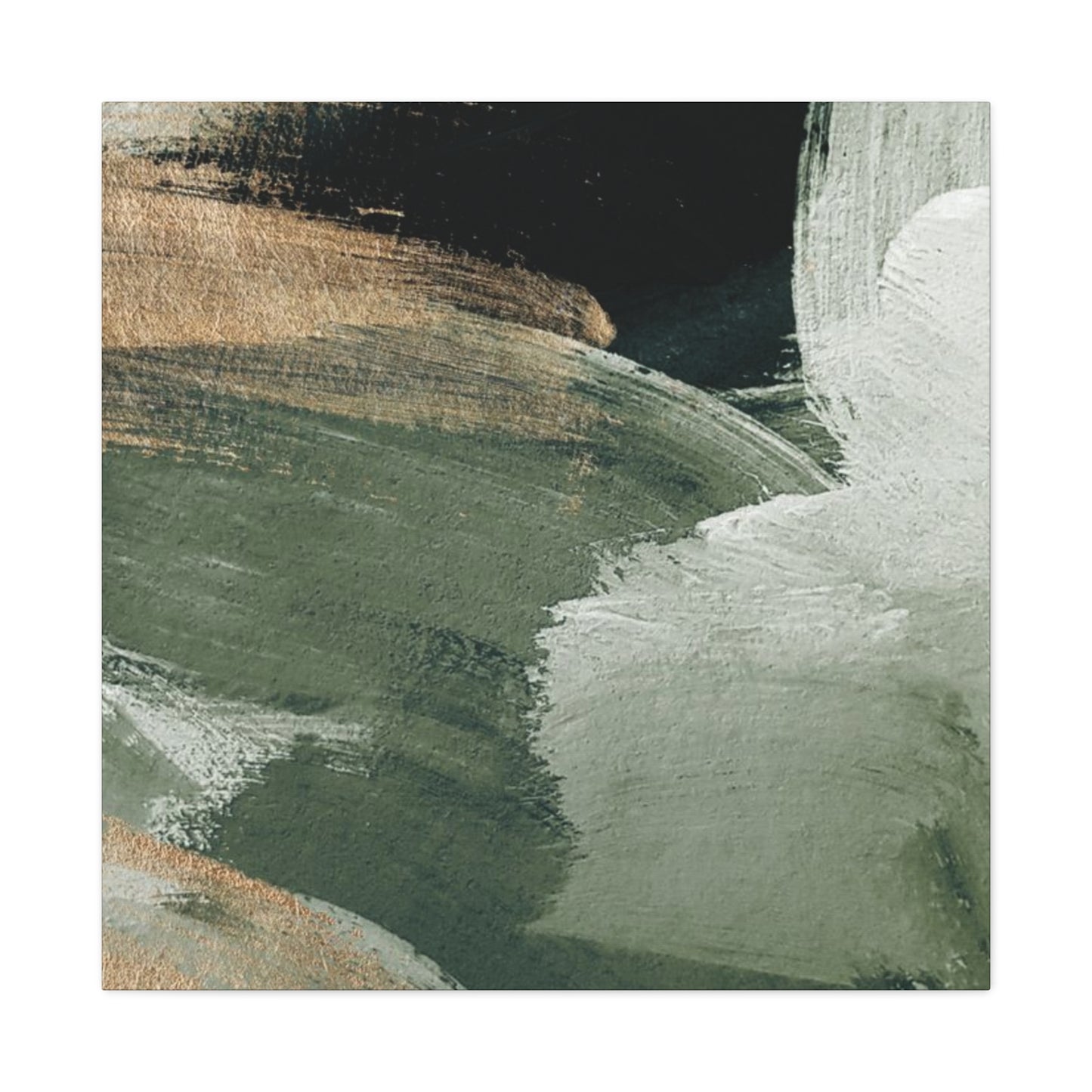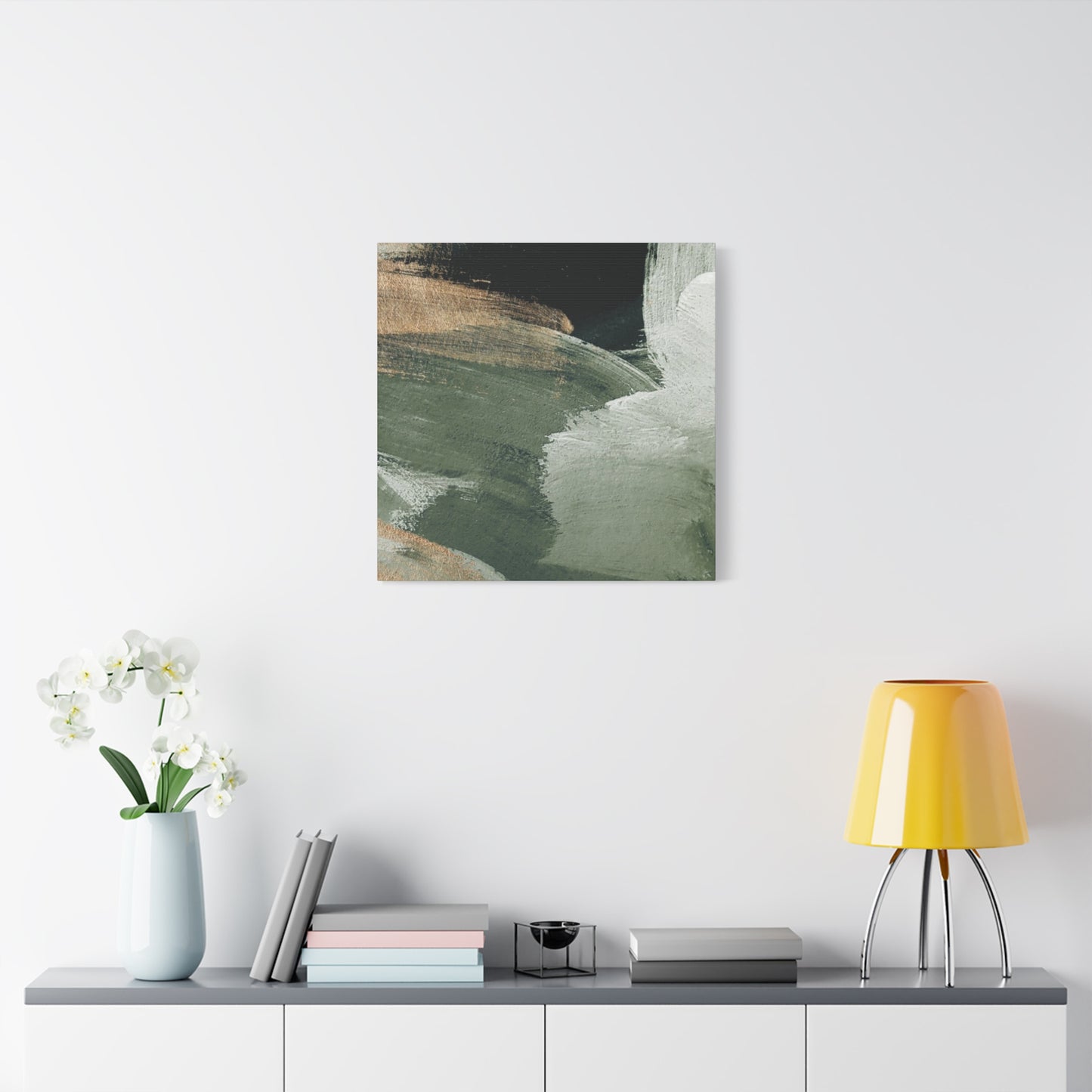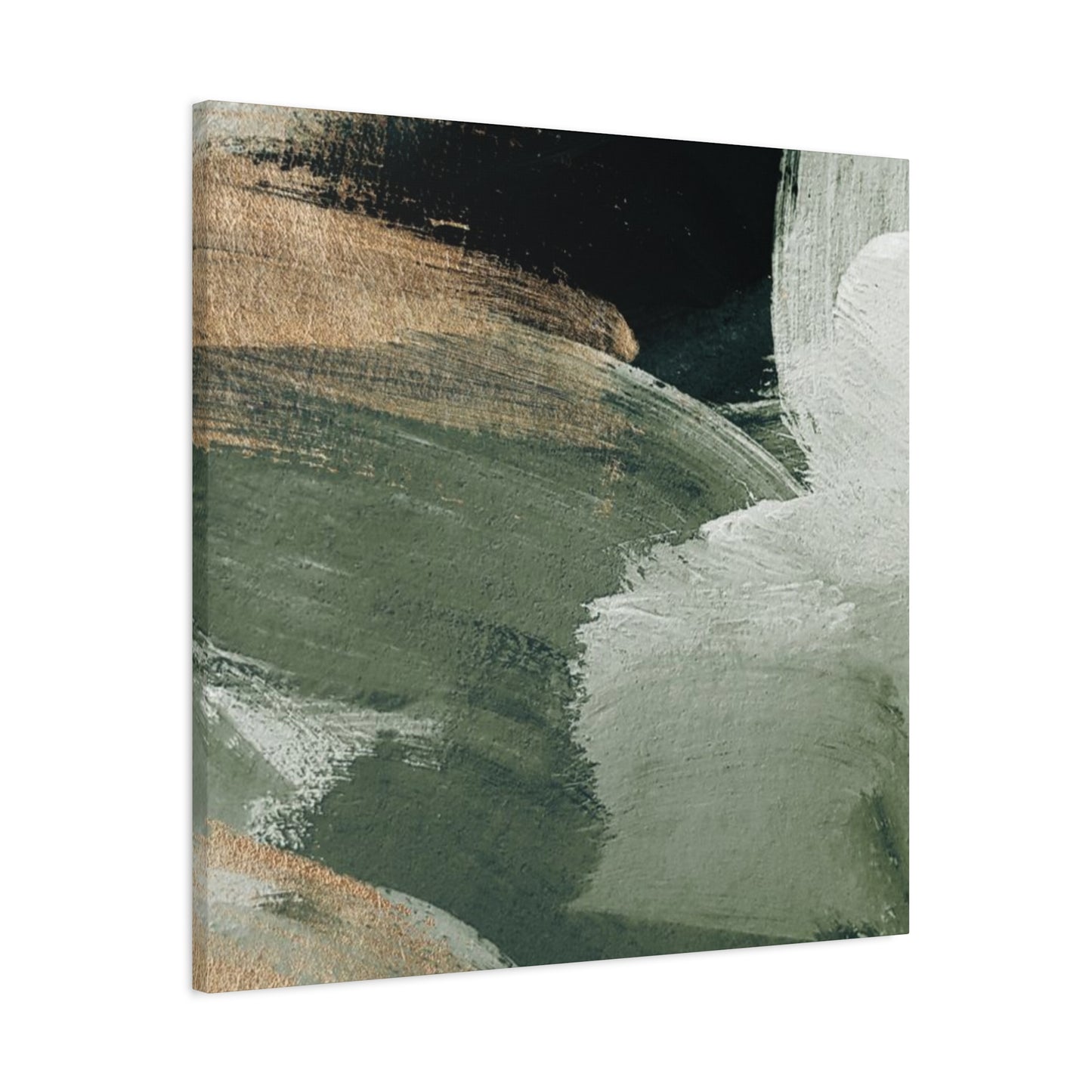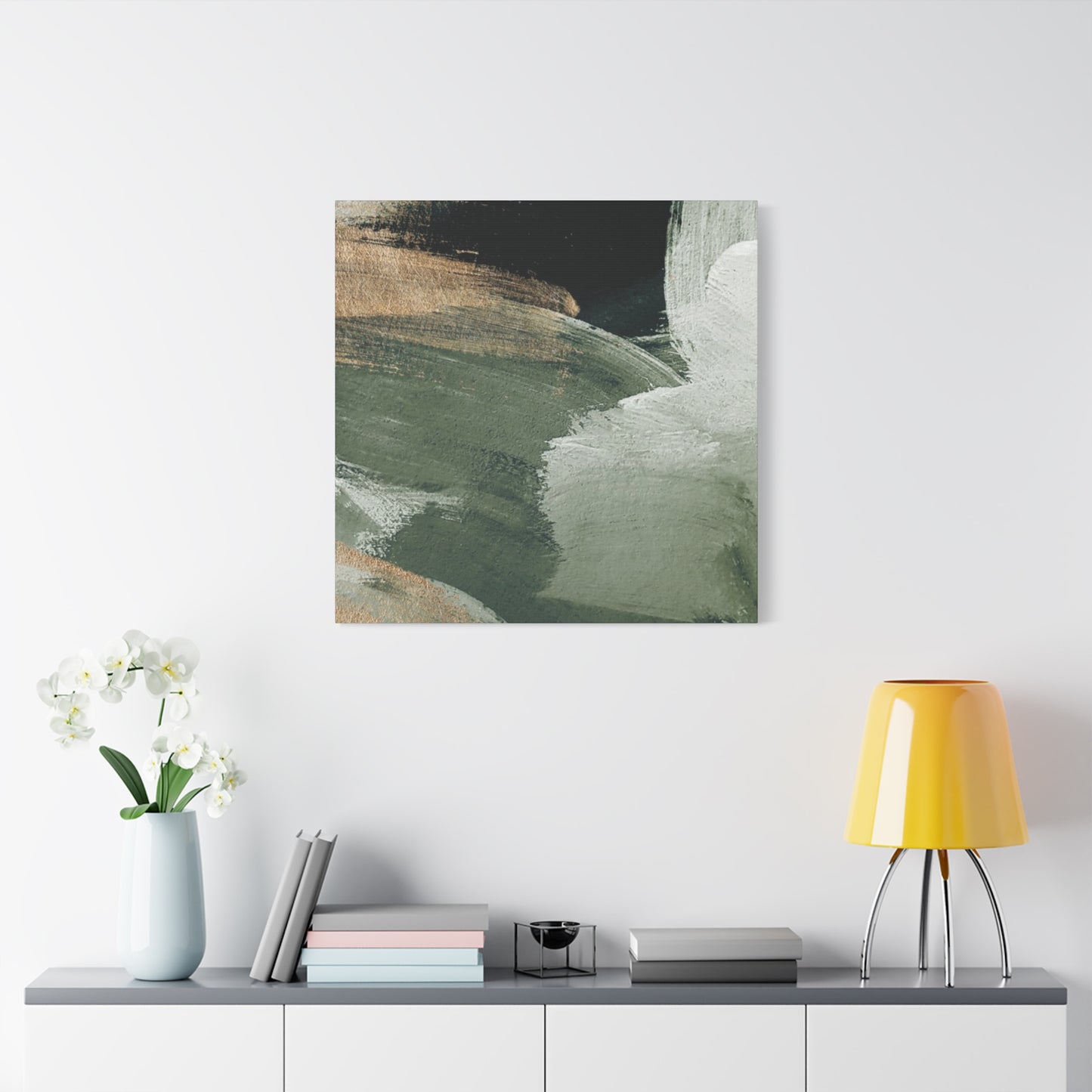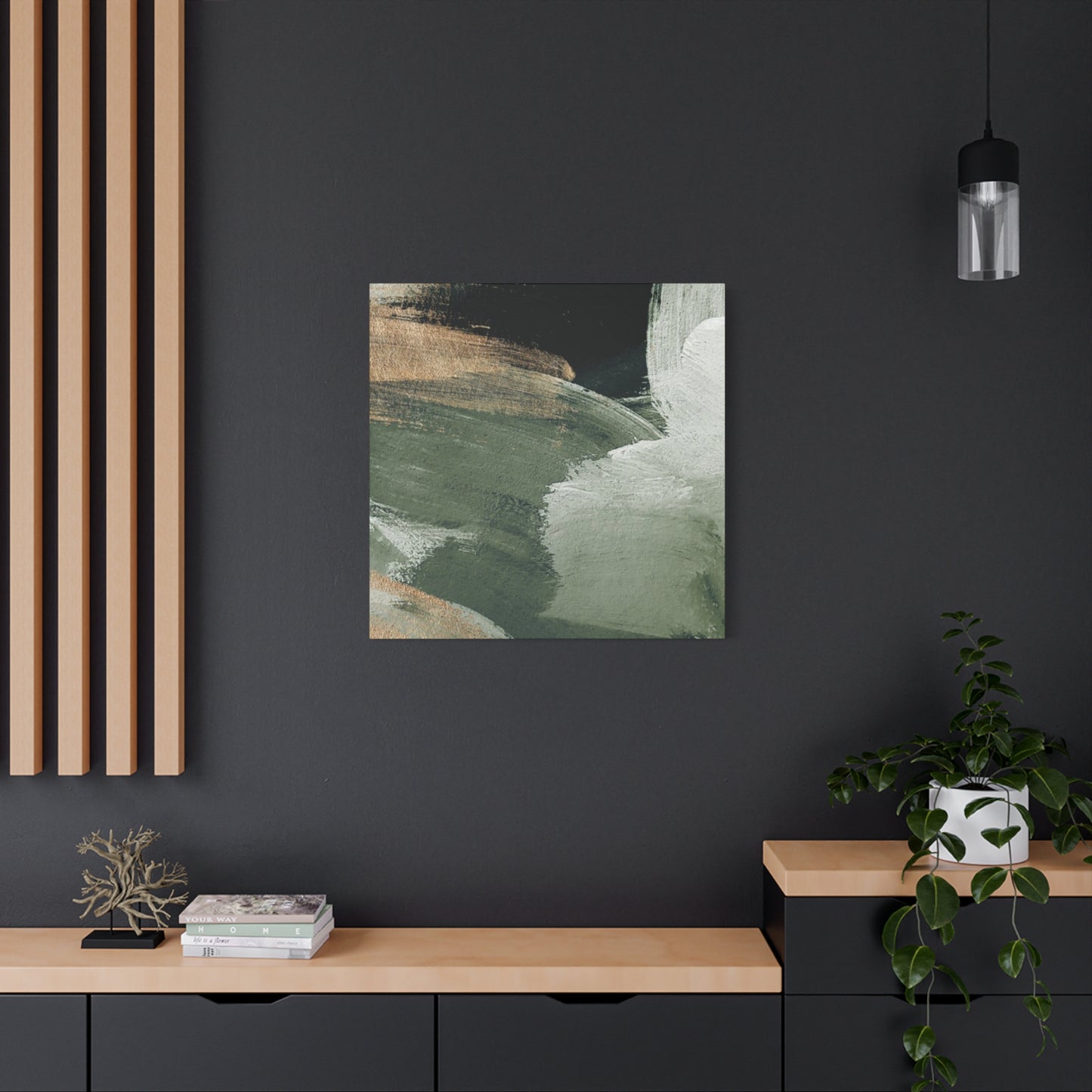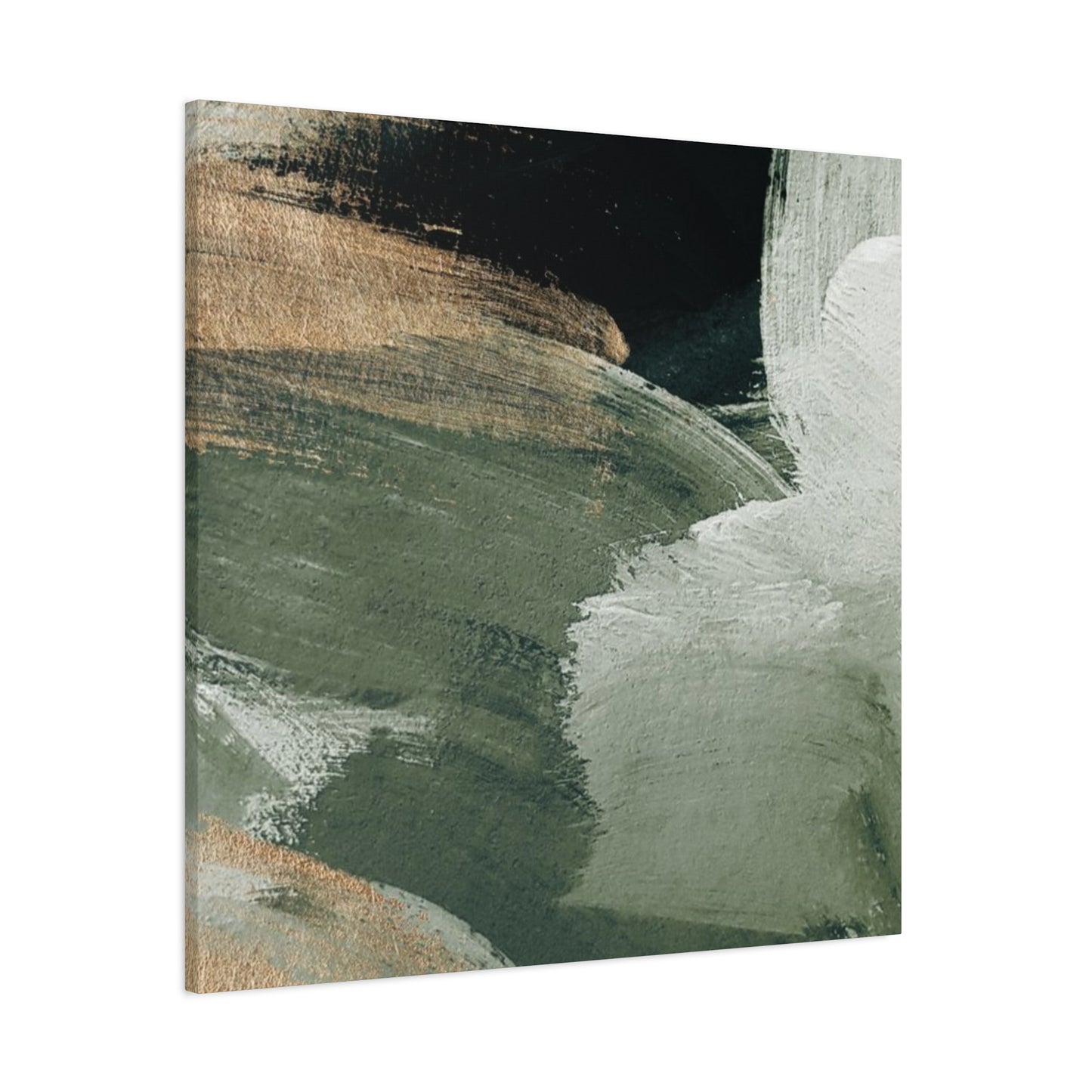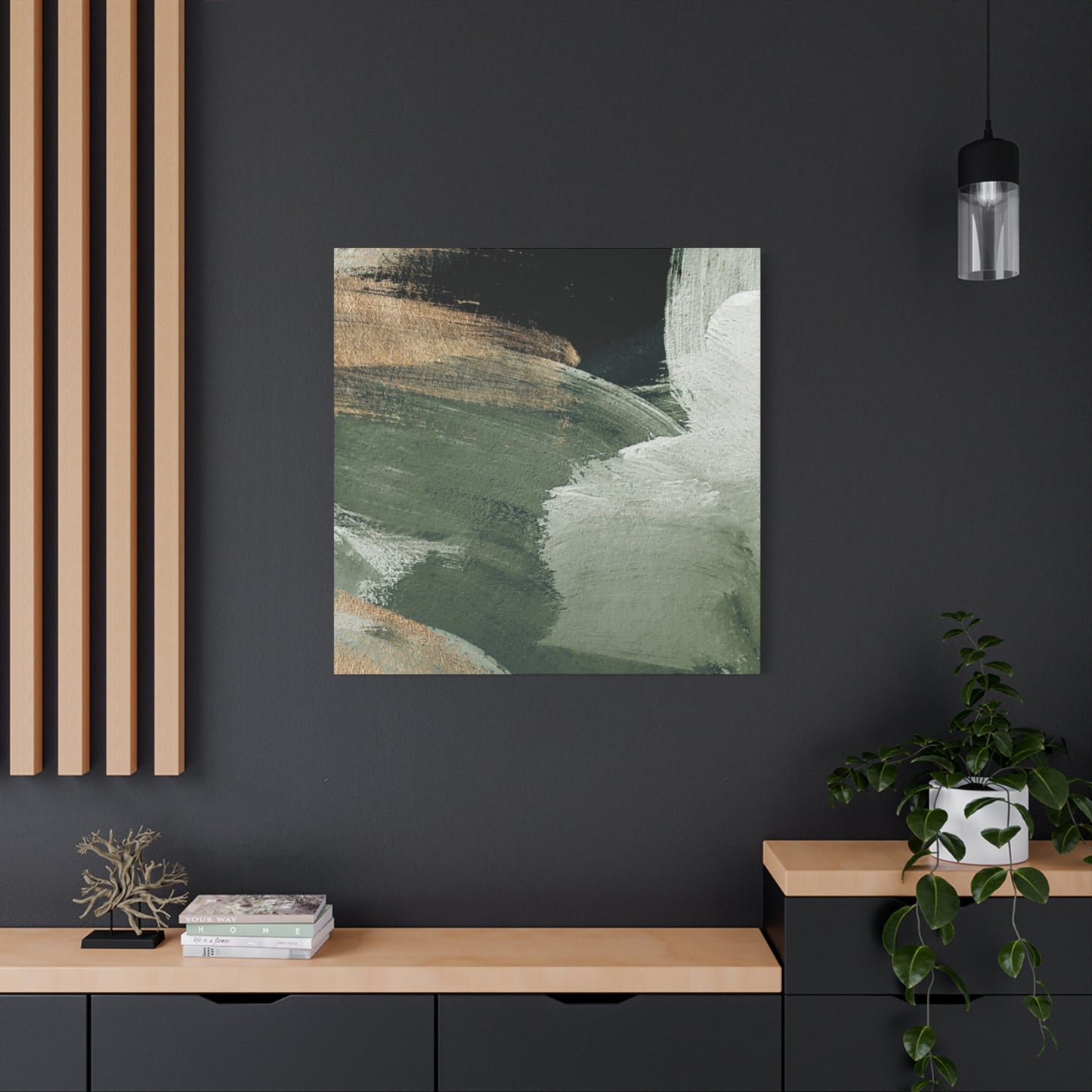Olive Green Brush Wall Art Canvas Prints: Elevating Interior Spaces with Natural Elegance
The captivating appeal of olive green has emerged as one of the most sophisticated color choices in contemporary interior decoration. This earthy, versatile shade brings the tranquility of nature indoors while maintaining an elegant and refined aesthetic. Olive green brush wall art canvas prints have become increasingly popular among homeowners, interior designers, and art enthusiasts who seek to create spaces that exude warmth, sophistication, and a connection to the natural world.
The beauty of olive green lies in its remarkable versatility and timeless quality. Unlike trendy colors that quickly fade from popularity, this organic hue maintains its relevance across different design movements and personal style preferences. When incorporated into brush wall art canvas prints, olive green creates visual interest through its various tones and depths, ranging from soft sage undertones to deeper, more saturated forest-inspired variations.
Canvas prints featuring olive green brush strokes offer a unique artistic expression that combines abstract creativity with natural inspiration. These pieces serve as focal points in living spaces, bedrooms, offices, and commercial environments. The textured appearance of brush strokes adds dimensional depth that flat prints cannot achieve, creating an engaging visual experience that changes with different lighting conditions throughout the day.
Interior decorators appreciate olive green for its ability to complement both warm and cool color palettes. This adaptable quality makes it an excellent choice for those who want artwork that can transition seamlessly as their decorating preferences evolve. The organic nature of brush stroke patterns in canvas prints adds an element of handcrafted authenticity that resonates with current design trends favoring artisanal and unique pieces over mass-produced decorations.
Significance of Olive Green in Art and Culture
Throughout history, olive green has held profound cultural and artistic significance across various civilizations. Ancient Mediterranean cultures revered the olive tree as a symbol of peace, wisdom, and prosperity. The color itself became associated with these noble qualities, finding its way into artistic expressions, textiles, and architectural elements. Greek and Roman societies incorporated olive green into their decorative arts, recognizing the calming and grounding properties of this natural hue.
During the Renaissance period, master painters discovered the remarkable qualities of olive green pigments in creating depth and realism in their compositions. Artists used various shades to depict foliage, create shadows, and establish atmospheric perspective in landscape paintings. The color became an essential component in the classical painting palette, contributing to the luminous quality that defines many masterworks from this era.
The Arts and Crafts movement of the late nineteenth century embraced olive green as part of its philosophy celebrating natural materials and organic forms. Designers and craftspeople incorporated the color into wallpapers, textiles, and decorative objects, establishing it as a staple of refined aesthetic taste. This period reinforced the association between olive green and sophisticated, nature-inspired design that continues to influence contemporary interior decoration.
In the twentieth century, olive green experienced various cycles of popularity, from its prominent use in mid-century modern design to its association with military aesthetics. Each era reinterpreted the color through different cultural lenses, yet its fundamental connection to nature and stability remained constant. Contemporary artists working with brush stroke techniques on canvas continue this rich tradition, creating works that honor historical precedents while expressing modern sensibilities.
The cultural symbolism embedded in olive green adds layers of meaning to contemporary wall art. When viewers encounter olive green brush canvas prints, they subconsciously connect with centuries of artistic tradition and cultural significance. This depth transforms decorative pieces into conversation starters that carry historical resonance while fitting perfectly into modern living spaces.
Material Quality and Canvas Print Production
The physical quality of canvas prints significantly impacts their appearance, longevity, and overall value as decorative investments. Superior materials and production methods ensure that olive green brush wall art maintains its beauty and structural integrity for decades. Understanding manufacturing processes helps consumers make informed decisions when selecting pieces for their spaces.
Canvas material itself varies considerably in quality and characteristics. Premium cotton canvas provides excellent color reproduction, durability, and a pleasant natural texture that complements artistic brush stroke patterns. The weave density affects how paint or printing inks settle into the material, influencing the final appearance of olive green tones and brush stroke definition.
Polyester canvas blends offer enhanced resistance to environmental factors like humidity and temperature fluctuations. These materials maintain dimensional stability better than pure cotton, reducing the risk of warping or sagging over time. For olive green wall art displayed in challenging environments like bathrooms or outdoor covered spaces, polyester-blend canvases provide practical advantages without significantly compromising aesthetic quality.
Printing technology determines how accurately original artwork translates to canvas reproductions. Giclée printing represents the highest standard for fine art reproduction, using archival-quality inks and specialized printers capable of rendering subtle color gradations. This method excels at capturing the nuanced variations within olive green brush strokes, preserving the dimensional quality of the original artwork.
Ink quality directly affects color permanence and resistance to fading. Archival pigment-based inks maintain their vibrancy for generations when properly displayed, ensuring that olive green tones remain true to their original appearance. UV-resistant coatings provide additional protection, particularly important for pieces displayed in rooms with significant natural light exposure.
Stretching and mounting methods influence the final presentation and structural soundness of canvas prints. Gallery wrap techniques, where canvas extends around frame edges, create a polished, contemporary appearance suitable for olive green abstract compositions. Traditional mounting with visible wooden frames offers more conventional presentation that suits classic or transitional interior styles.
Incorporating Olive Green Art into Various Room Settings
Different rooms present unique opportunities and challenges for incorporating olive green brush canvas prints. Understanding how these spaces function and the moods they should evoke helps guide appropriate artwork selection and placement. Strategic integration of olive green wall art enhances both aesthetic appeal and functional comfort across residential environments.
Living rooms serve as multipurpose gathering spaces where families relax, entertain guests, and engage in various activities. Olive green canvas prints in these areas should be substantial enough to anchor seating arrangements without overwhelming the space. Large-scale abstract brush stroke compositions work particularly well above sofas or fireplaces, creating focal points that draw the eye while maintaining visual harmony with surrounding furnishings.
The versatility of olive green allows it to bridge different design elements within living spaces. When combined with neutral upholstery and natural wood furniture, olive green art reinforces an organic, grounded aesthetic. Alternatively, pairing olive green canvas prints with metallic accents and contemporary furnishings creates sophisticated contrast that feels both modern and timeless.
Bedrooms benefit immensely from the calming properties of olive green wall art. Placing brush stroke canvas prints above headboards establishes a serene focal point that promotes restful sleep and morning tranquility. The organic quality of brush textures adds visual interest without the stimulating effect of busier patterns or brighter colors that might interfere with relaxation.
In bedroom settings, the scale of olive green artwork should complement room dimensions and furniture proportions. Smaller spaces often benefit from single medium-sized pieces or diptychs that add interest without crowding walls. Larger master bedrooms can accommodate expansive canvas prints or multi-panel installations that create dramatic visual impact while maintaining the soothing qualities essential for sleep environments.
Home offices and study spaces gain focus-enhancing benefits from olive green canvas art. The color's psychological properties support concentration and reduce eye strain during extended work sessions. Abstract brush stroke compositions provide visual breaks that allow the mind to rest momentarily, enhancing productivity and creative thinking.
Positioning olive green wall art at eye level or slightly above in office settings places it within natural sightlines during work breaks. This strategic placement encourages brief moments of mental rest that improve overall work performance. The organic nature of brush strokes offers a counterbalance to the angular, technological environment typical of home offices.
Dining areas transform when enhanced with thoughtfully selected olive green canvas prints. The color's natural associations create appetite-friendly environments while maintaining sophisticated ambiance suitable for both casual family meals and formal entertaining. Brush stroke artwork adds artistic refinement that elevates dining experiences beyond mere functional necessity.
Kitchen spaces, particularly open-concept designs that flow into dining areas, can incorporate olive green canvas art to establish visual cohesion. The color complements natural materials commonly found in kitchens, including wood cabinetry, stone countertops, and metal fixtures. Selecting canvas prints with protective coatings ensures longevity in environments with higher humidity and temperature variations.
Bathrooms represent an often-overlooked opportunity for artistic expression through olive green wall art. The color's spa-like associations create relaxing retreat atmospheres that transform daily routines into moments of self-care. Moisture-resistant canvas prints featuring olive green brush strokes bring gallery-quality aesthetics to these intimate spaces.
Entryways and hallways benefit from olive green canvas art that creates welcoming first impressions while maintaining visual interest throughout transitional spaces. These areas often present challenging dimensions for artwork selection, with narrow walls or awkward proportions. Vertical brush stroke compositions can emphasize ceiling height, while horizontal pieces help balance longer hallway expanses.
Design Styles That Complement Olive Green Canvas Art
Olive green brush wall art demonstrates remarkable adaptability across diverse interior design styles. This versatility stems from the color's natural origins and neutral undertones, allowing it to enhance various aesthetic approaches. Understanding how olive green functions within different design movements helps create cohesive, intentional spaces.
Scandinavian design principles emphasizing simplicity, functionality, and connection to nature find perfect expression through olive green canvas art. The muted, organic quality of olive tones aligns seamlessly with the Nordic palette of soft neutrals and gentle accent colors. Brush stroke textures add visual warmth that prevents Scandinavian minimalism from feeling cold or austere.
In Scandinavian-inspired interiors, olive green wall art often serves as one of few color accents, making proper selection particularly important. Abstract compositions with generous negative space maintain the airy, uncluttered feeling essential to this style while introducing natural color that brings life to predominantly white or gray environments. The handcrafted quality of brush strokes honors Scandinavian appreciation for artisanal craftsmanship.
Mid-century modern design celebrates organic forms, natural materials, and thoughtful color applications that make olive green an ideal choice. The period's characteristic warmth and optimism find expression in olive green canvas prints featuring bold, confident brush strokes. These pieces complement iconic mid-century furniture while adding contemporary artistic sensibility.
Pairing olive green wall art with mid-century modern interiors creates visual dialogue between vintage and contemporary elements. The color bridges the gap between period-appropriate earth tones and current design trends, allowing spaces to feel historically informed without appearing dated. Geometric brush stroke patterns particularly resonate with mid-century aesthetic principles.
Contemporary design's emphasis on clean lines, mixed materials, and artistic expression provides an excellent backdrop for olive green canvas art. The style's flexibility allows for various interpretations, from minimalist compositions to more complex, layered brush stroke works. Olive green introduces organic warmth that balances the sleek, sometimes austere quality of contemporary spaces.
In contemporary settings, olive green wall art can create striking contrast with glossy surfaces, metal accents, and glass elements common to the style. The matte, textured quality of canvas provides visual relief from reflective materials while maintaining the sophisticated aesthetic contemporary design demands. Large-scale installations make particularly strong statements in open-concept contemporary homes.
Abstract Versus Representational Approaches
Olive green canvas art exists along a spectrum from purely abstract compositions to realistic representations of natural subjects. Understanding the characteristics and appropriate applications of different artistic approaches helps match artwork to specific spaces and personal preferences.
Abstract compositions featuring olive green brush strokes emphasize color, form, and texture over recognizable subjects. These pieces invite personal interpretation and emotional response rather than literal understanding. The non-representational nature makes abstract olive green art highly versatile, fitting easily into various design contexts without requiring specific thematic coordination.
The beauty of abstract brush stroke art lies in its ability to complement rather than compete with interior design elements. Without depicting specific subjects, abstract olive green canvas prints become part of the overall aesthetic environment, enhancing spaces through color and texture while allowing furniture, architecture, and other design elements their own visual prominence.
Purely abstract olive green compositions range from minimal, controlled works featuring clean geometric brush applications to expressive, gestural pieces with energetic, spontaneous mark-making. Minimalist abstract art suits contemporary and Scandinavian interiors seeking restrained elegance. Expressionistic abstractions complement bohemian, eclectic, or artistic spaces embracing bold statements.
Semi-abstract approaches suggest natural forms without rendering them precisely. Olive green brush strokes might evoke forest scenes, botanical subjects, or landscape elements while maintaining artistic abstraction. This middle ground appeals to those who appreciate representational art but prefer contemporary interpretation over traditional realism.
Semi-abstract olive green canvas art functions particularly well in transitional interiors bridging traditional and contemporary sensibilities. The suggested natural references provide connection points for those uncomfortable with purely abstract art, while the artistic interpretation maintains current aesthetic relevance. These pieces often spark conversation by inviting viewers to discern and discuss what they perceive.
Representational olive green wall art depicts recognizable subjects with varying degrees of realism. Botanical illustrations featuring olive-toned foliage, landscape paintings capturing natural vistas, or still life compositions incorporating olive green elements all fall within this category. Brush stroke application in representational work can range from tight, detailed techniques to loose, impressionistic approaches.
Traditional representational art featuring olive green tones suits classic, transitional, and some eclectic interiors. The recognizable subject matter provides visual anchoring that some individuals find more accessible than abstract work. Botanical subjects particularly complement nature-inspired design schemes and spaces incorporating abundant plant life.
Impressionistic olive green landscapes occupy a sweet spot between abstraction and representation. Loose brush strokes capture the essence of natural scenes without photographic detail, creating atmospheric pieces that evoke emotion and memory. This approach particularly appeals to those seeking art with natural references but contemporary execution.
The choice between abstract and representational olive green canvas art often reflects personal psychology and viewing preferences. Some individuals find comfort and enjoyment in recognizable subjects that connect to familiar experiences. Others prefer the open-ended interpretation and contemporary sophistication of abstract compositions.
Mixing abstract and representational olive green artwork within single spaces can create dynamic, collected aesthetics. Combining approaches adds visual variety while maintaining color cohesion through shared olive green palettes. This strategy works particularly well in larger homes where different rooms can express varied artistic perspectives while maintaining overall design continuity.
Texture and Dimensional Effects in Canvas Prints
Physical texture dramatically influences how olive green canvas art engages viewers and interacts with light within spaces. Understanding textural possibilities helps select pieces that maximize visual interest and aesthetic impact. The dimensional quality of brush stroke canvas prints offers advantages over flat photographic prints.
Genuine textured canvas reproduces the raised, tactile quality of original brush strokes through specialized printing techniques or hand-finishing processes. This three-dimensional surface catches light differently throughout the day, creating ever-changing visual experiences as natural and artificial light sources shift. The effect adds life and dynamism to static artwork.
Embossed canvas treatments create raised patterns mimicking actual paint application. These dimensional effects enhance the handcrafted appearance of olive green brush stroke art, making mass-produced prints feel more like original paintings. The technique works particularly well with bold, gestural compositions where pronounced texture contributes to artistic expression.
Gel medium applications add transparent textured layers to canvas prints after the printing process. This hand-finishing technique introduces genuine paint texture while maintaining the color accuracy and detail of high-quality printing. The result closely approximates original painted works while remaining accessible at lower price points than unique hand-painted pieces.
Matte versus glossy finishes affect how olive green tones appear and how artwork interacts with ambient light. Matte finishes minimize glare and reflections, making artwork visible from various angles without distracting shine. This treatment suits most residential applications, particularly spaces with significant window light or bright artificial illumination.
Glossy or semi-gloss finishes intensify color saturation and create reflective qualities that add depth to olive green tones. These treatments work well in dimmer environments or spaces with carefully controlled lighting where glare concerns are minimal. The enhanced color richness appeals to those seeking maximum visual impact from their canvas art.
Varnish applications protect canvas prints while influencing appearance. Traditional damar or synthetic varnishes add subtle gloss that enriches olive green pigments, creating depth reminiscent of classical oil paintings. UV-protective varnishes maintain color permanence while offering various finish options from matte to high gloss.
Canvas weave visibility contributes to the overall textural character of prints. Tighter weaves create smoother surfaces suited to detailed brush stroke reproduction. More open weaves introduce pronounced fabric texture that enhances the handcrafted, organic quality appropriate for expressive olive green compositions.
Layered printing techniques build dimensional color depth through multiple passes of ink application. This approach creates richer, more complex olive green tones with subtle variations that mimic the layered glazing techniques used in traditional painting. The resulting depth prevents flat, poster-like appearance common in lower-quality printing.
Backlit applications create dramatic alternative presentations for olive green canvas art in contemporary settings. Translucent canvas materials allow light sources positioned behind artwork to illuminate compositions from within, creating glowing effects particularly stunning with lighter, more transparent olive green tones. This approach suits modern, design-forward interiors.
The interaction between canvas texture and brush stroke patterns creates visual synergy that enhances both elements. Bold, sweeping brush applications benefit from pronounced canvas texture that emphasizes gestural movement. Detailed, refined brush work suits smoother surfaces that allow intricate mark-making to receive full attention.
Seasonal Adaptability and Year-Round Appeal
One of olive green canvas art's greatest strengths lies in its seasonal versatility. The color maintains visual appeal and appropriateness throughout the year, unlike more season-specific hues that may feel mismatched as weather and light conditions change. This adaptability provides excellent value and lasting satisfaction.
Spring associations connect olive green to new growth and renewal. The color's botanical connections feel particularly relevant as nature awakens from winter dormancy. Olive green brush canvas prints harmonize beautifully with fresh spring decorating approaches featuring lighter textiles, floral accents, and open windows welcoming warmer weather.
In spring contexts, pairing olive green wall art with soft yellow, blush pink, or sky blue accents creates optimistic environments celebrating the season's freshness. The color serves as a grounding element that prevents spring palettes from feeling too ethereal or disconnected from earth. Its natural quality reinforces seasonal themes without requiring complete decorative overhauls.
Summer decorating embraces indoor-outdoor connections that olive green naturally supports. The color's association with foliage and natural landscapes reinforces summer's abundance and warmth. Canvas prints featuring olive green tones complement summer color schemes incorporating white, natural wood, and ocean-inspired blues.
Lightweight summer textiles in linen and cotton work beautifully alongside olive green wall art, creating fresh, airy environments suited to warm weather living. The color maintains visual interest without the heaviness of deeper, more saturated hues that might feel oppressive in summer heat. Its organic quality complements seasonal emphasis on natural materials and outdoor connections.
Autumn represents the season most strongly associated with olive green, as the color naturally appears in fall foliage and harvest landscapes. Canvas art featuring olive green brush strokes feels particularly appropriate during this season, harmonizing with traditional autumn decorating incorporating rust, burgundy, mustard, and brown tones.
The transitional quality of olive green makes it ideal as rooms shift from summer to winter modes. Unlike brighter greens that may feel summery or darker forest greens that read as distinctly wintry, olive green bridges seasons seamlessly. Adjusting accent colors and textile weights while maintaining olive green wall art provides decorating continuity.
Winter decorating often embraces deeper, more saturated colors and heavier textiles that create cozy retreats from cold weather. Olive green canvas art supports these seasonal shifts while preventing spaces from becoming too dark or enclosed-feeling. The color maintains enough brightness to prevent winter gloom while offering warmth that complements seasonal preferences.
Pairing olive green wall art with winter whites, deep navy, charcoal gray, and metallic gold creates sophisticated cold-weather palettes. The color's natural origins provide organic contrast to winter's stark landscapes, bringing life and connection to nature into indoor spaces when outdoor environments feel dormant and inhospitable.
The year-round appropriateness of olive green canvas art provides practical advantages beyond aesthetic considerations. Artwork that remains visually satisfying regardless of season eliminates the expense and effort of rotating decorative pieces or feeling dissatisfied with choices that age poorly over time. This permanence contributes to creating enduring, personally meaningful living environments.
Selecting olive green wall art specifically for its seasonal adaptability requires attention to tone and intensity. Mid-range olive greens with balanced warm and cool undertones transition most successfully across seasons. Extremely yellow-toned olives may feel too warm for summer, while very cool, grayish olives might lack the coziness desired in winter months.
Lighting Considerations for Optimal Display
Lighting profoundly affects how olive green canvas art appears and functions within spaces. Natural and artificial light sources interact with the color and texture of brush stroke paintings in complex ways. Understanding these relationships helps position artwork effectively and select appropriate lighting solutions for maximum aesthetic impact.
Natural daylight represents the most desirable light source for viewing artwork, revealing true colors and subtle variations in olive green tones. However, natural light changes dramatically throughout the day and across seasons, creating dynamic viewing experiences. Morning light tends toward cool, bluish qualities that emphasize green aspects of olive tones. Afternoon and evening light becomes warmer and more golden, bringing out brown and yellow undertones.
Positioning olive green canvas art relative to windows requires balancing optimal viewing with protection from damaging direct sunlight. East or west-facing walls opposite windows receive excellent indirect natural light without prolonged sun exposure. North-facing walls in Northern Hemisphere locations receive consistent, cool natural light ideal for color accuracy. South-facing walls receive the brightest, warmest natural light but may require UV-protective glass or coatings.
Artificial lighting must be carefully considered to properly display olive green wall art. Different light bulb technologies produce varying color temperatures measured in Kelvin that dramatically affect color perception. Warm white light (2700-3000K) creates cozy atmospheres but may muddy olive green tones or make them appear more brown. Neutral white light (3500-4100K) provides balanced color rendering suitable for most residential applications. Cool white light (5000K+) emphasizes green components but may feel harsh in living spaces.
Picture lights mounted above canvas art provide focused illumination while creating gallery-like presentation. For olive green brush stroke pieces, warm LED picture lights enhance the artwork's natural, organic quality without generating heat that could damage canvas. Adjustable fixtures allow fine-tuning of light direction and intensity to eliminate glare and maximize texture visibility.
Track lighting offers flexible solutions for highlighting olive green wall art within larger room lighting schemes. Angling spotlights at approximately thirty degrees from vertical minimizes glare while effectively illuminating canvas surfaces. Dimmer controls allow adjustment of intensity for different times of day and activities, maintaining artwork visibility during evening hours.
Recessed ceiling lights provide ambient illumination that can effectively light canvas art when properly positioned. Placing recessed fixtures approximately three feet from walls creates grazing light that emphasizes the dimensional texture of brush strokes. This approach works particularly well with higher ceilings where artwork might otherwise receive insufficient light.
Wall-mounted sconces flanking olive green canvas prints create balanced illumination while adding architectural interest. This traditional approach suits classic and transitional interiors while providing excellent light distribution across artwork surfaces. Selecting warm-toned sconces maintains the inviting quality olive green naturally provides.
Avoiding common lighting mistakes preserves the beauty of olive green canvas art. Direct spotlighting from too close creates hot spots and harsh shadows that distort brush stroke textures. Insufficient lighting renders subtle color variations invisible, reducing artwork to indistinct dark masses. Overly cool lighting can make olive green appear drab or lifeless rather than warm and inviting.
Color rendering index measurements indicate how accurately light sources reproduce colors compared to natural sunlight. For displaying olive green wall art, selecting bulbs with CRI values above 90 ensures that the nuanced tones and subtle variations within brush strokes remain visible and true to the artist's intentions. High CRI lighting proves particularly important in spaces without abundant natural light.
Smart lighting systems allow programming different lighting scenes that optimize artwork viewing at various times. Morning scenes might emphasize natural light with minimal artificial supplementation. Evening scenes can provide focused artwork illumination while reducing overall room brightness. This flexibility ensures olive green canvas prints receive appropriate lighting regardless of time or activity.
Seasonal changes in natural light availability require adjusting artificial lighting approaches. Winter months with shorter days and weaker sunlight benefit from increased artificial illumination to maintain artwork visibility. Summer's extended daylight reduces reliance on artificial sources, though evening lighting remains important for appreciating artwork during late-day hours.
Framing Options and Presentation Styles
Framing choices significantly impact how olive green canvas art integrates into interior spaces. Different presentation methods create varied aesthetic effects ranging from casual contemporary to formal traditional. Understanding framing options helps achieve desired design outcomes while protecting canvas investments.
Gallery wrap represents the most popular contemporary framing approach where canvas extends around wooden stretcher frame edges. This technique creates clean, finished appearance without traditional frames, emphasizing artwork over presentation apparatus. Gallery wrapping particularly suits modern and contemporary interiors favoring minimal, uncluttered aesthetics.
The depth of gallery-wrapped stretcher bars affects visual presence and shadow effects. Standard three-quarter-inch depth creates subtle dimensional presence suitable for most applications. One-and-a-half-inch deep stretchers produce more pronounced shadows and three-dimensional appearance that emphasizes artwork as sculptural objects. Extra-deep stretchers measuring two inches or more create dramatic architectural presence.
Mirror wrap techniques continue edge imagery around canvas sides, maintaining design continuity visible from angles. This approach works well with olive green abstract compositions where edge continuation enhances rather than distracts from overall design. The seamless appearance reinforces contemporary aesthetics while eliminating the stark white canvas edges sometimes visible with gallery wrapping.
Solid color wrap applies neutral tones to canvas edges, creating clean finished appearance without continuing artwork imagery. Black, white, or colors matching dominant olive green tones provide options coordinating with different interior color schemes. This practical approach suits situations where canvas sides remain partially visible but edge imagery would appear distracting or disjointed.
Traditional picture frames introduce architectural presence and formal refinement to olive green canvas art. Wood frames in natural finishes complement the organic quality of olive green while adding textural interest. Painted frames in white, cream, black, or metallic finishes create varied effects from casual beachy to formal elegant, depending on frame style and finish details.
Frame width and profile dramatically affect overall presentation. Narrow frames maintain emphasis on artwork while providing finished edges. Wider frames create substantial presence that suits traditional interiors and formal spaces. Ornate frames with decorative moldings suit classic traditional settings, while simple squared profiles align with contemporary and transitional aesthetics.
Float mounting techniques suspend canvas within frames, creating visible gaps between artwork edges and frame interior. This contemporary presentation method emphasizes canvas as precious object while introducing dimensional shadow effects. Float framing works particularly well with olive green brush stroke art where three-dimensional texture deserves highlighting.
Shadowbox framing creates deep reveals between artwork and frame, producing dramatic dimensional effects. This approach suits smaller olive green canvas pieces displayed as part of gallery wall arrangements. The added depth creates visual interest that helps smaller works maintain presence alongside larger pieces or architectural elements.
Museum acrylic glazing protects canvas art while adding refinement to framed presentations. Anti-reflective coatings minimize glare and maximize visibility from various viewing angles. UV-filtering properties protect olive green pigments from light-induced fading, particularly important for pieces displayed in bright natural light. The crystal-clear appearance maintains unobstructed artwork viewing.
Frameless mounting systems using standoffs or clips create industrial, gallery-inspired presentations. These minimal systems maintain focus entirely on artwork while introducing contemporary edge. The approach suits olive green canvas art in modern, loft-style, or artistic interiors where conventional framing might feel too traditional or constraining.
Selecting framing that complements rather than competes with olive green artwork requires considering visual weight and style compatibility. Heavy, ornate frames can overwhelm subtle brush stroke compositions, while minimal gallery wrapping might not provide sufficient gravitas for formal traditional spaces. Achieving balance ensures framing enhances rather than detracts from artistic content.
Care and Maintenance of Canvas Wall Art
Proper maintenance preserves the beauty and longevity of olive green canvas art, protecting decorative investments and ensuring continued enjoyment for years or decades. Understanding appropriate care techniques prevents common damage while maintaining optimal appearance. Canvas prints require different maintenance approaches than framed works under glass.
Dust accumulation represents the most common maintenance challenge for canvas art. Regular gentle dusting prevents buildup that can dull colors and embed in canvas texture. Soft, clean microfiber cloths or specialized art dusting brushes remove surface dust without abrading canvas or disturbing printed surfaces. Dusting should proceed gently in direction of canvas weave to avoid catching or pulling fibers.
Frequency of dusting depends on environmental factors and household conditions. Homes with pets, heavy traffic, or nearby construction may require weekly dusting. Most residential settings benefit from monthly attention. Establishing regular maintenance schedules prevents dust accumulation from becoming difficult to remove without more aggressive cleaning methods.
Vacuum cleaning offers efficient dust removal for larger canvas pieces or multiple artworks. Using vacuum upholstery attachments on lowest suction settings with soft brush attachments safely removes dust without contact between vacuum and canvas. Maintaining several inches distance prevents accidental canvas damage while allowing airflow to lift dust particles.
Spot cleaning addresses occasional marks or smudges without requiring overall canvas cleaning. Slightly dampened clean white cloths gently dabbed on affected areas can remove many marks without spreading contamination or damaging canvas. Testing cleaning approaches on inconspicuous areas first prevents inadvertent damage to visible artwork sections.
Avoiding water damage protects canvas art from the most serious common threat. Canvas materials absorb moisture readily, leading to warping, mold growth, or paint separation. Keeping olive green wall art away from humid environments like bathrooms or kitchens reduces risk. In these locations, selecting moisture-resistant materials or protective coatings provides additional protection.
Direct sunlight exposure causes gradual color fading that permanently damages canvas art. UV-protective coatings, window films, or appropriate artwork positioning minimize this threat. Even UV-resistant materials benefit from avoiding direct sun exposure, particularly during peak afternoon hours when light intensity reaches maximum levels.
Temperature fluctuations and extremes threaten canvas integrity. Excessive heat causes canvas to become brittle and dry, while cold environments may cause cracking or paint separation. Maintaining stable indoor temperatures between 65-75 degrees Fahrenheit provides optimal conditions. Avoiding placement near heating vents, fireplaces, or air conditioning outlets prevents localized temperature problems.
Humidity control maintains canvas dimensional stability and prevents mold or mildew growth. Ideal relative humidity ranges between 40-50 percent. Levels below 40 percent cause excessive drying that may result in canvas cracking. Humidity above 60 percent encourages mold growth and canvas warping. Dehumidifiers or humidifiers help maintain appropriate levels in challenging climates.
Professional cleaning services address issues beyond routine maintenance capabilities. Art conservation specialists possess training and materials appropriate for valuable canvas works requiring restoration or deep cleaning. Investing in professional services proves worthwhile for significant pieces showing damage or requiring expert attention.
Storage considerations apply when rotating artwork seasonally or during moves. Canvas should remain vertical or flat, never rolled, which can crack paint or damage canvas structure. Covering stored pieces with acid-free paper or clean sheets protects from dust while allowing air circulation that prevents moisture buildup. Climate-controlled storage environments prevent temperature and humidity damage.
Insurance documentation protects financial investments in olive green canvas art. Photographing artwork from multiple angles, retaining purchase documentation, and obtaining appraisals for valuable pieces facilitates replacement claims if loss or damage occurs. Regular documentation updates reflect current market values and condition changes.
Creating Gallery Wall Arrangements
Gallery walls featuring olive green canvas art alongside complementary pieces create dynamic, personalized displays that showcase individual aesthetic sensibilities. These curated arrangements transform blank walls into engaging visual narratives. Successful gallery walls require planning, proper spacing, and attention to visual balance.
Planning gallery wall layouts before installing hardware prevents unnecessary holes and ensures satisfying final arrangements. Creating paper templates matching artwork dimensions allows experimenting with various configurations without commitment. Laying arrangements on floors replicates wall appearance, helping visualize spacing and proportion relationships before installation.
Symmetrical gallery wall arrangements create formal, orderly presentations suited to traditional and transitional interiors. Centering arrangements around dominant pieces like large olive green canvas prints establishes clear focal points. Flanking central pieces with smaller complementary works creates balanced, harmonious compositions that feel deliberately organized.
Asymmetrical arrangements embrace organic, collected aesthetics appropriate for bohemian, eclectic, or contemporary spaces. These informal configurations allow greater creative freedom while requiring careful attention to visual weight distribution. Positioning larger olive green canvas pieces strategically prevents arrangements from feeling bottom-heavy or tilted.
The salon-style approach densely packs artwork with minimal spacing, creating rich visual tapestries. This traditional method suits maximalist interiors and art-focused spaces where abundant visual interest is desired. When incorporating olive green canvas art in salon arrangements, the color provides grounding elements among varied subjects and styles.
Grid arrangements organize uniform-sized pieces in structured rows and columns, creating contemporary, organized presentations. This approach works particularly well with series of related olive green brush stroke pieces or when combining canvas art with photography and prints in consistent frames. Precise spacing and alignment prove essential for successful grid installations.
Spacing between gallery wall pieces significantly affects overall appearance and readability. Generally, maintaining two to four inches between frames creates cohesive arrangements where pieces relate without crowding. Tighter spacing suits salon-style approaches, while generous spacing emphasizes individual pieces within collections.
Vertical and horizontal orientation mixing adds visual interest to gallery walls. Combining portrait and landscape format pieces creates dynamic rhythms that guide viewer attention throughout arrangements. Olive green canvas art in various orientations provides anchoring elements that establish color continuity among diverse pieces.
Incorporating varied art mediums beyond canvas prints enriches gallery wall compositions. Mixing olive green canvas pieces with framed photography, works on paper, mirrors, or three-dimensional objects creates dimensional variety and tactile interest. Maintaining color coordination through olive green elements establishes unity among diverse media.
Scale variation prevents gallery walls from appearing monotonous or predictable. Combining larger olive green canvas statement pieces with smaller complementary works creates visual hierarchy and focal point emphasis. The size variety accommodates different viewing distances, with larger pieces commanding attention from across rooms while smaller works reward close inspection.
Theme considerations guide subject matter selection for cohesive gallery walls. Abstract olive green canvas art combines successfully with botanical subjects, landscapes, or geometric compositions sharing natural inspiration. Alternatively, embracing eclectic mixing celebrates diverse interests and personal history through collected objects.
Color coordination establishes visual unity among gallery wall elements. Using olive green canvas art as color anchors allows incorporating complementary hues in other pieces while maintaining overall coherence. Limiting arrangements to three or four dominant colors prevents visual chaos while allowing sufficient variety.
Hardware selection ensures secure installation supporting gallery wall weight. Picture hanging systems with adjustable hooks facilitate rearranging without creating new wall holes. For permanent arrangements, appropriate wall anchors rated for combined artwork weight prevent installation failures and potential damage.
Lighting gallery walls requires considering multiple pieces with varied surface qualities. Track lighting or multiple picture lights illuminate entire arrangements while allowing individual adjustment. Alternatively, washing walls with ambient light from sconces or recessed fixtures creates even illumination suitable for densely packed arrangements.
Digital Art and Printing Technology Advances
Technological advances dramatically expanded possibilities for creating and reproducing olive green canvas art. Understanding these developments helps consumers navigate options and appreciate the craft behind contemporary canvas prints. Digital tools complement rather than replace traditional artistic skills.
Digital painting software allows artists to create original olive green brush stroke compositions entirely on computers or tablets. Pressure-sensitive styluses replicate natural brush behavior, recording every gestural nuance. Sophisticated programs simulate traditional media including oils, acrylics, and watercolors with remarkable accuracy.
The advantages of digital creation include unlimited experimentation without material costs, easy corrections, and the ability to create artwork in any size. Artists can explore numerous olive green color variations and compositional alternatives before committing to final versions. This flexibility often results in more refined, considered works.
Hybrid approaches combining traditional and digital techniques offer creative flexibility. Artists might create initial paintings traditionally, then scan and digitally enhance them, or vice versa. These methods allow leveraging the strengths of both approaches while mitigating limitations of either alone.
Giclée printing represents the highest quality method for reproducing olive green canvas art. The term, French for "to spray," describes the fine ink application creating museum-quality prints. Twelve-color printer systems capture subtle tonal variations within olive green ranges that four-color printing cannot reproduce accurately.
Print resolution measured in dots per inch determines detail clarity in canvas reproductions. Professional giclée printing typically operates at 1440 DPI or higher, ensuring that olive green brush stroke details appear sharp and clear even upon close inspection. This resolution level prevents visible pixelation or banding that compromises quality.
Archival pigment inks ensure color permanence exceeding traditional photographic prints. These inks resist fading for hundred-plus years when properly displayed and protected. For olive green canvas art, this longevity means artwork maintains its beauty across generations, justifying investments in quality pieces.
Color management systems ensure accurate color reproduction from digital files to physical prints. Calibrated monitors, color profiles, and controlled printing environments allow artists and printers to achieve faithful olive green tone reproduction. This technical precision ensures canvas prints match artistic intentions.
Print-on-demand technology enables economically producing canvas art in any quantity, including single pieces. This flexibility allows artists offering olive green works to maintain minimal inventory while fulfilling custom orders efficiently. Consumers benefit from access to extensive catalogs without sellers needing warehouse space.
Digital artwork distribution through online platforms democratizes access to olive green canvas art. Artists worldwide can reach global audiences without gallery representation. Consumers access unprecedented variety, discovering niche styles and emerging talents impossible to find through traditional channels alone.
Variable data printing allows customizing canvas art for individual purchasers. Names, dates, or personalized color variations can be incorporated into olive green brush stroke compositions, creating unique pieces from base designs. This technology suits commemorative pieces and personalized gifts.
Three-dimensional printing technology promises future possibilities for reproducing actual paint texture from original works. While currently experimental for art applications, advances may eventually allow precisely replicating the dimensional qualities of brush strokes, further closing gaps between originals and reproductions.
Commissioning Custom Olive Green Canvas Art
Commissioning original artwork offers opportunities to obtain perfectly customized pieces matching specific visions, spaces, and preferences. Working directly with artists to create custom olive green canvas art produces unique works impossible to find among mass-produced offerings. Understanding the commissioning process ensures satisfying collaborations.
Finding appropriate artists begins with research identifying those whose existing work aligns with desired aesthetics. Online portfolios, social media, and art platforms showcase artist styles, techniques, and subject matter preferences. Seeking artists already working with olive green palettes or brush stroke approaches increases likelihood of successful collaborations.
Initial consultations establish mutual understanding of project scope, vision, and feasibility. Discussing desired sizes, color preferences, stylistic approaches, and intended display locations helps artists evaluate whether commissions align with their capabilities and interests. Honest dialogue prevents mismatched expectations and ensures satisfying outcomes.
Reference materials including photographs of spaces, color swatches, and inspiration images communicate visions more effectively than verbal descriptions alone. Sharing existing olive green canvas pieces admired or room photos showing intended display locations provides artists crucial context for creating appropriate works.
Budget discussions should occur early in commissioning processes. Custom olive green canvas art pricing varies enormously based on artist experience, work size, complexity, and timeframes. Obtaining detailed quotes including creation costs, materials, framing if applicable, and shipping prevents surprises and allows informed decisions.
Contracts protect both parties by documenting agreements regarding specifications, timelines, payment schedules, and ownership rights. Written agreements should address what happens if either party becomes dissatisfied, including revision policies and cancellation terms. Clear documentation prevents disputes and ensures professional relationships.
Creation timelines vary based on project complexity and artist schedules. Custom olive green canvas works might require weeks or months from commission to completion. Understanding realistic timeframes prevents frustration while allowing artists necessary creative development time. Rush fees sometimes apply for expedited completion.
Progress updates during creation allow monitoring development and providing feedback when revisions remain feasible. Many artists share photos at key stages, allowing commissioners to request adjustments before works near completion. This collaborative approach increases satisfaction with final results.
Final thoughts:
Olive green brush wall art canvas prints offer a timeless way to elevate any interior space with natural elegance. Unlike bold, saturated colors that can dominate a room, olive green brings a grounded, calming energy that complements a wide range of styles—from modern minimalism to rustic, boho, or Japandi interiors. The soft brush strokes and earthy tones create visual interest while maintaining a serene, organic feel.
When choosing your piece, consider not just the color but also the undertones, texture, and scale. The right shade of olive can harmonize beautifully with neutral walls, wooden accents, and warm metals, creating a balanced and sophisticated aesthetic. Paying attention to quality—like canvas material, printing method, and frame finish—ensures your wall art feels intentional and long-lasting, rather than just decorative filler.
Placement and styling also play a crucial role in the impact of your artwork. A well-positioned olive brush canvas can serve as a focal point, tie together scattered design elements, or add a layer of depth to a simple, neutral room. With thoughtful lighting and complementary textures, the piece can transform an ordinary wall into a stunning statement of refined taste.
Ultimately, olive green brush wall art isn’t just about decorating; it’s about curating an atmosphere that feels warm, balanced, and connected to nature. Whether you choose a single large piece or a collection of smaller prints, the subtle elegance of olive tones will add depth and character to your home for years to come.

















